Footbridges and pedestrian bridges are more than simple crossing points and entranceways, they have the potential to be iconic works of functional art. Providing a safe and efficient way for pedestrians to cross over traffic, rivers, or other obstacles is just the start, as footbridges that are beautifully designed can greatly enrich and enhance their surroundings.
Just because they’re smaller in size than bridges built for automobiles, it doesn’t mean they have to be smaller in impact and design.
Peace Bridge, Canada
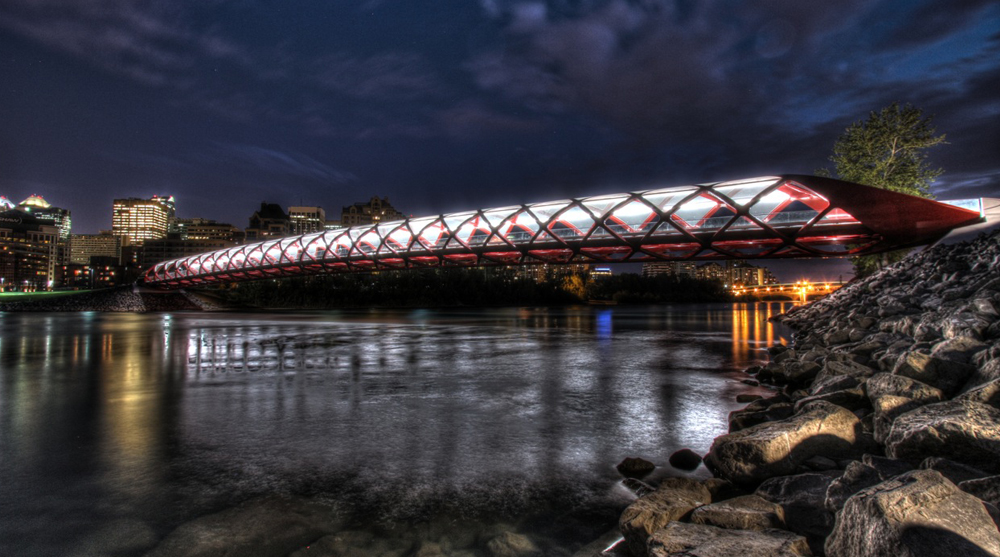
Calgary’s Peace Bridge is often known as "Finger Trap Bridge" due to its visual similarity to the finger trap puzzle. Image source
Peace Bridge in Calgary, Alberta, Canada was designed by Spanish architect Santiago Calatrava, opening to the public in 2012. Often known as "Finger Trap Bridge" due to its visual similarity to the finger trap puzzle, the bridge accommodates roughly 6,000 people a day. Designed to have a minimal ecological impact, Peace Bridge operates with no piers in the water and a restricted height, due to the vicinity of the City/Bow River Heliport.
Designed to allow barrier-free access for people of all mobility types with comfortable and secure lighting throughout, Peace Bridge is a departure from the architect’s typical asymmetric designs which also incorporates the colours of the Canadian flag.
Gateshead Millennium Bridge, UK
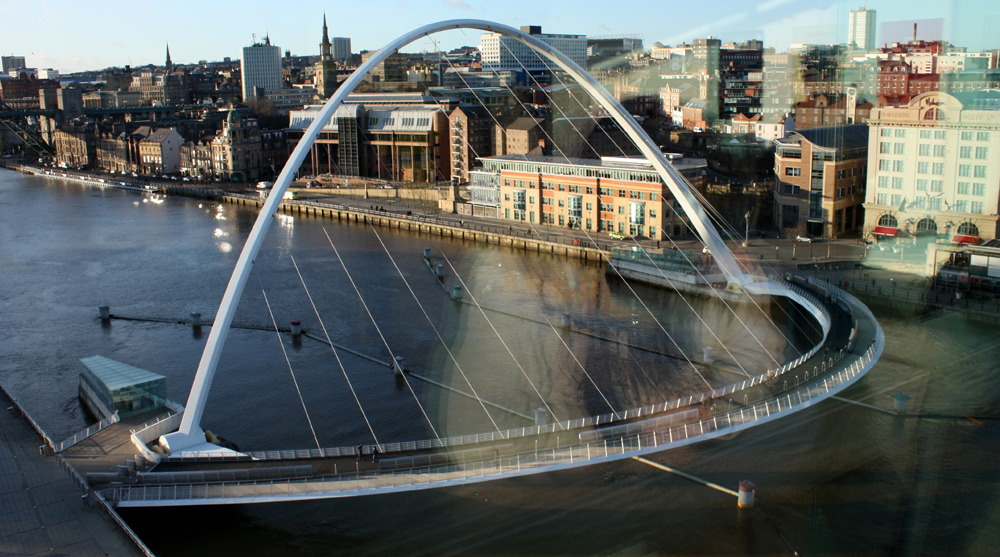
The gateshead Millennium Bridge was designed by WilkinsonEyre and had a total budget of £22 million. Image source
Positioned across the River Tyne in North East England, the Gateshead Millennium Bridge is a pedestrian and cyclist tilt bridge that was first opened in 2001. The bridge was designed by WilkinsonEyre and had a total budget of £22 million. The bridge features six 45 cm-diameter hydraulic rams that rotate the bridge in order to allow boats and ships up to 25 metres high to pass underneath, taking as little as 4 and a half minutes to complete a full 40° rotation from closed to open.
The Gateshead Millennium Bridge won WilkinsonEyre the 2002 Royal Institute of British Architects Stirling Prize, and the bridge received the Outstanding Structure Award in 2005 from the International Association for Bridge and Structural Engineering.
Webb Bridge, Melbourne, Australia
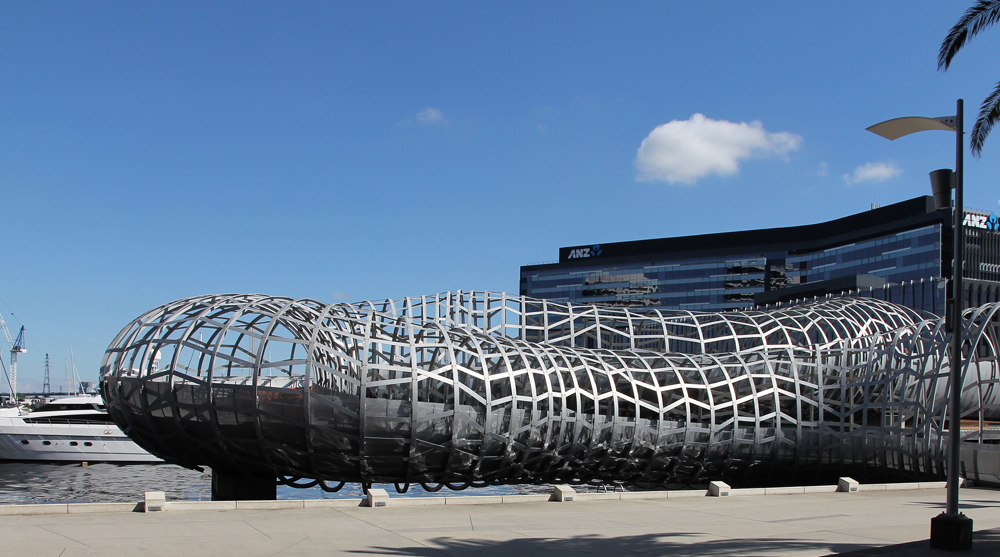
Webb Bridge links a decommissioned railway bridge to the south bank of the Yarra River. Image source
Designed by architecture firm Denton Corker Marshall in collaboration with artist Robert Owen, Webb Bridge in Melbourne, Australia was completed in 2003. Located in the city’s Docklands precinct, Webb Bridge forms a cycling and pedestrian link to the main part of the area through Docklands Park.
Webb Bridge links a decommissioned railway bridge to the south bank of the Yarra River and is recognised for its new ramped, steel-lattice structure.
The Jetty to Mont-Saint-Michel, France
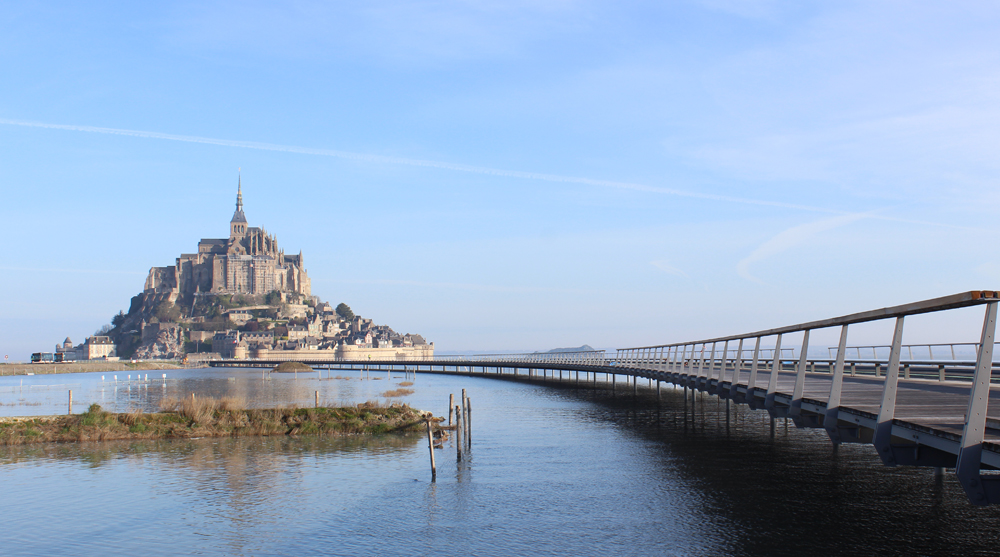
The Mont-Saint-Michel jetty links the mainland to the UNESCO World Heritage Site which includes the nearly half-mile-long pedestrian bridge. Image source
Opened in 2014, this footbridge allows visitors to gain access to the medieval French city of Mont-Saint-Michel, located off the coast of Normandy. Designed by Dietmar Feichtinger Architectes, the light bridge allows the waters to flow freely around the island and improves the efficiency of the now operational dam. The jetty links the mainland to the UNESCO World Heritage Site which includes the nearly half-mile-long pedestrian bridge and a slightly longer causeway used for shuttles.
Costing approximately €209 million, the bridge has, on occasion, been completely submerged in times of extremely high tides, the latest incident taking place in 2015.
Moses Bridge,Halsteren, Netherlands
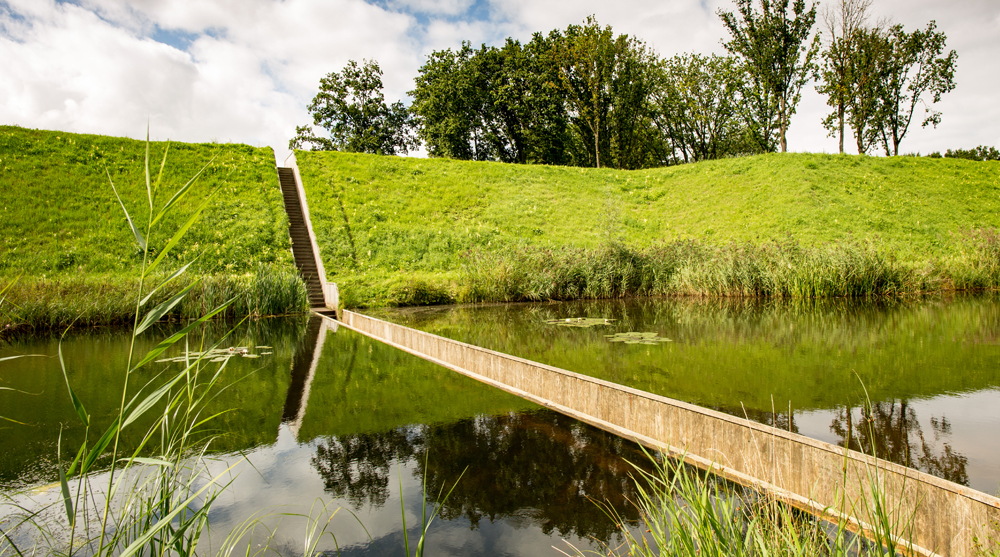
The Moses Bridge in the Netherlands lies like a trench and disappears into the landscape. Image source
The Moses Bridge in the Netherlands takes an innovative approach, choosing to cut through a moat at Fort de Roovere rather than going over it. Designed by RO&AD Architecten, the so-called bridge is constructed entirely out of waterproof wood, and lies like a trench and disappears into the landscape. The height of the water is controlled by adjustable dams at both sides of the moat to ensure that the bridge isn’t submerged.
Gauja National Park Footbridge Competition
Large or small, complex or simple, a footbridge is capable of adding charm and character to any location, even ascending to iconic status with the right design.
Latvia’s largest national park celebrates its 45th anniversary by tasking architecture enthusiasts with designing an entryway footbridge. Known for the scale of diverse wildlife and varied landscapes within, the Gauja National Park is a popular tourist attraction in one of the greenest and naturally stunning countries in the world.
The footbridge should be both welcoming and innovative, greeting guests to the park while at the same time having the potential to become known as an internationally-recognized landmark in its own right.
Top 3 Reasons Why You Should Enter Architecture Competitions
Curious about the value of architecture competitions? Discover the transformative power they can have on your career - from igniting creativity and turning designs into reality, to gaining international recognition.
Learn more



























